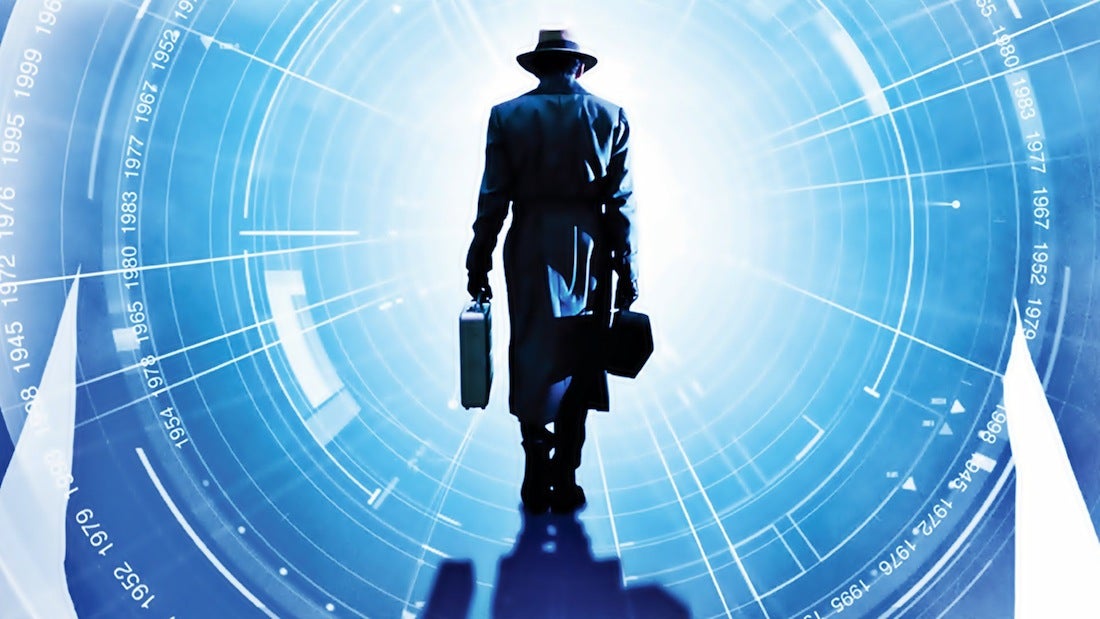Many have dreamed of figuring out how to
travel in time—and dismissed it as impossible. Now, researchers have proposed a
mathematical model that makes time travel possible, using concepts of
Einstein’s theory of general relativity coupled with the hypothesis that time
is not a separate dimension.
We think of the
universe as being made up of three spatial dimensions, and a fourth dimension
representing time. But mathematician Ben Tippett at the University of British
Columbia, Canada, says this is wrong. He believes time should not be separated
from other three spatial dimensions—instead all four run together,
simultaneously.
“It
is because time and space are attached together that the time machine to behave
in this way,”
EINSTEIN’S THEORY AND EQUATIONS:
Einstein's theory of special relativity says that time slows down or
speeds up depending on how fast you move relative to something else.
Approaching the speed of light, a person inside a spaceship would age much
slower than his twin at home. Also, under Einstein's theory of
general relativity,
gravity can bend time.
Through A Warmhole
General relativity also provides scenarios that could allow
travelers to go back in time, according to NASA.
The equations, however, might be difficult to physically achieve.
One possibility could be to go faster than light, which travels
at 186,282 miles per second (299,792 kilometers per second) in a vacuum.
Einstein's equations, though, show that an object at the speed of light would have both infinite mass and a length of
0. This appears to be physically impossible, although some
scientists have extended his equations and said it might be done.
A linked possibility, NASA stated, would be to create "wormholes" between points in
space-time.
ALTERNATE THEORIES:
Infinite cylinder
Astronomer Frank Tipler proposed a mechanism (sometimes known as
a Tipler Cylinder)
where one would take matter that is 10 times the sun's mass, then roll it into
very long but very dense cylinder.
After
spinning this up a few billion revolutions per minute, a spaceship nearby —
following a very precise spiral around this cylinder — could get itself on a
"closed, time-like curve", according to the Anderson Institute. There
are limitations with this method, however, including the fact that the cylinder
needs to be infinitely long for this to work.
Black holes
Another possibility would be to move a ship rapidly around a black hole, or to artificially create that condition with a huge, rotating structure.
Another possibility would be to move a ship rapidly around a black hole, or to artificially create that condition with a huge, rotating structure.
"Around
and around they'd go, experiencing just half the time of everyone far away from
the black hole. The ship and its crew would be traveling through time,"
"Imagine they
circled the black hole for five of their years. Ten years would pass elsewhere.
When they got home, everyone on Earth would have aged five years more than they
had."
Cosmic strings
Another theory for potential time travelers involves something
called cosmic strings — narrow tubes of energy stretched
across the entire length of the ever-expanding universe. These thin regions,
left over from the early cosmos, are predicted to contain huge amounts of mass
and therefore could warp the space-time around them.
Cosmic
strings are either infinite or they’re in loops, with no ends, scientists say.
The approach of two such strings parallel to each other would bend space-time
so vigorously and in such a particular configuration that might make time
travel possible, in theory.
Time machines
It is generally understood that traveling forward
or back in time would require a device — a time machine — to take you there.
Time machine research often involves bending space-time so far that time lines
turn back on themselves to form a loop, technically known as a "closed
time-like curve."
However, time-travel
research suggests time machines
are possible without exotic matter. The work begins with a doughnut-shaped hole
enveloped within a sphere of normal matter. Inside this doughnut-shaped vacuum,
space-time could get bent upon itself using focused gravitational fields to
form a closed time-like curve. To go back in time, a traveler would race around
inside the doughnut, going further back into the past with each lap. This
theory has a number of obstacles, however. The gravitational fields required to
make such a closed time-like curve would have to be very strong, and
manipulating them would have to be very precise.
Towards
the END ( Conclusion)
The
question remains, can we really take it to that extreme? And is it possible to
go backwards or forward through time, too?
Once
again, we don't really know. Einstein's theories tend to rule out rewinding
time, but they're still theories. It's possible some future discovery could
prove them wrong. As for the wormhole approach, we won't really know exactly
how that works until we try it, and at the moment, we don't really have a
feasible method for building a wormhole in space.
If you're really curious about time travel
though, go see Interstellar. The science behind it is
sound—if sometimes a bit fantastic—but the movie itself is very fantastic.[3]
By:AKB
REFERENCE:--
[1] http://www.newsweek.com/time-travel-physics-einstein-spacetime-tardis-592908
[2]https://www.space.com/21675-time-travel.html
[3]http://gizmodo.com/yes-time-travel-is-possible-heres-how-1654958816
4) credits for images:--google images.





Great Article about the time travel mystery...Liked the way of presentation..👍😀
ReplyDeleteThank u so much!!!.. To be updated.. Plz be Connected with our blog😊
Delete